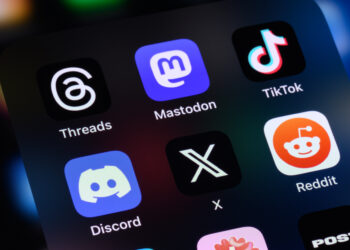
Nature’s greatest mystery is anything to do with books: who reads them, how many there are, how much of them we read, what they cost, where we buy them, who makes money on their sale. Every day I step through a wormhole to try to keep up with attempts to probe this mystery and am happy to report that we are chipping away at this great unknown, but there is much work left to do. A recent piece by Dan Cohen, who is the head of the Digital Public Library of America, sheds some light on the puzzle of why sales of ebooks seem to have flattened out. A controversial article by Elisabeth Jones and Paul Courant argues that sales of university press monographs to academic libraries have not fallen off, a direct rebuke to every university press director in the country, who study their sales figures every day. I am skeptical of Jones and Courant’s claims, but we will have to wait for the results of a much more detailed project that has come to my attention—let’s call it the Large Hadron Collider of book data—are made public later this year before we can definitively dismiss Jones and Courant. I am myself participating in a project with my fellow Chef Roger Schonfeld on a study of how many books Amazon sells to libraries, for which we should have some preliminary data by June. And then there is the market research report from Simba, Scholarly & Professional E-Book Publishing 2015-2019, which describes in great detail just what is going on with ebooks in academic and professional markets. Taken together we have a picture of an industry that is changing but mature, a picture that is somewhat at odds with popular perception.
I owe the metaphor of physics in this post to Cohen, who coined the phrase “dark reading” (dark matter/dark reading: get it?) to describe all the user engagement with ebooks that is not captured in sales figures. As for the sales figures that most often find their way into the popular press (that is, the ones Cohen is critiquing), almost always they concern trade books (understandably), and what those figures are telling us is that after the initial explosion of ebooks brought about by the introduction of the Amazon Kindle in 2007, the rate of adoption of ebooks by the general public has more or less leveled off. Now, just what that “level” percentage is today is itself a matter of debate, in part because ebook vendors are notoriously tight-lipped, but also because it’s hard to know when the studies are referring to American sales, global sales, sales in languages other than English, sales at retail or net sales to publishers, and whether the huge number of self-published books is included in the count. My best guess is that about 25% of the U.S. book market, measured in sales dollars to publishers, is for ebooks. You will sometimes see figures for sales through retailers and sometimes figures quoted for units, not dollars. Not even a high-energy physicist can add apples and oranges, but when it comes to book data, all the fruits are often mixed in a salad of competing flavors.
What Cohen makes us aware of is that there is a tremendous amount of usage for ebooks in libraries. We should add to this that libraries often make more of the ebooks under their stewardship than we are likely to find with ebooks sold to the trade—for example, integration into library discovery systems. So are ebooks leveling off or are they just getting started? It does appear probable that at worst the ebook market is just taking a breather before another jump in usage and, eventually, sales. What could trigger that jump would be enhanced feature sets (better annotation tools, better built-in dictionaries and other reference works) and superior hardware (longer battery life for tablets, say). What I would most like to see in the meantime is a comprehensive service that publishes fully anonymized library circulation data. Dark reading could become bright reading if librarians stopped hoarding this information.
Although Cohen is mostly focused on the fact that dark reading demonstrates that ebooks are still making headway against print, I suspect publishers will read his piece from another perspective, as a spur to find new ways to monetize ebooks. This is not a trivial point, though it certainly is controversial. Book publishers, unlike journal publishers, create far more value than they capture (think of the network TV shows on Sunday, where books are discussed at length but not directly monetized). With publishers becoming disenchanted with demand-driven acquisitions programs in libraries, we should look for new efforts to capture more margin in the near-term future. Cohen’s piece inadvertently will serve as part of the case for the prosecution.
By focusing exclusively on the academic and professional book market and by the net receipts of the publishers and aggregators, Simba is able to come up with some highly persuasive conclusions. First, academic and professional ebook sales grew by about 7.7% in 2014, making it a $2.86 billion market (net to publishers) and is forecast to grow at a CAGR of 6.4% through 2019. Those are not blockbuster numbers, but it shows that this segment of the ebook market is anything but mature. The catch is that the print market is declining faster than the ebook market is growing, so book publishers are continuing to wrestle with shrinking circumstances. (The Simba figures are not perfectly apposite Jones and Courant’s, but the Simba report is nonetheless a partial rebuttal of the Jones and Courant paper.) Now, we all know or should know by now that in a mature market, consolidation is the order of the day. This is happening in the academic and professional sector, where the biggest players are buying up smaller players and when outright purchase is not possible, the smaller players are aggregated on the larger publishers’ digital platforms. This is true for not-for-profit publishers as well as for-profits; a case in point is the ebook collections of university press titles now marketed by Project Muse.
One important point that the Simba report underscores is just how hard the book business is. To combat this, book publishers are taking advantages of the properties of digital media and are making books look more and more like journals. Journals, of course, are a great, if mature business. A book is made into a journal not editorially but in the marketing department. A book in the print era was a stand-alone object that was sold “firm”—that is, once purchased it belonged to the customer and the publisher could derive no additional revenue from it. A book in the digital world, however, can be bundled with other books and sold as part of a collection on a subscription business, which makes ongoing revenue possible and serves to lock up library collection dollars. This in turn leads to the big getting bigger and the smaller players getting squeezed out, precisely what happens in the journals market. It is no surprise to run one’s eye down Simba’s list of the largest academic and professional ebook publishers and find the usual suspects: Elsevier, Wiley, Springer, et al. Oxford University Press is the only not-for-profit publisher to make the top ten.
As I read the Simba report I heard in my mind the crescendo toward the end of the Beatles’ “A Day in the Life.” What will the climax be? The whole world is conspiring to put more and more pressure on the budgets of institutional libraries, but does this strategy eventually blow up? When? Who picks up the pieces when they fall to the ground?
Discussion
19 Thoughts on "The Enduring Mystery of the Academic Book Market"
The AAUP systematically collects data on sales for its member presses, so it would be interesting to compare its data with Simba’s. What percentage of overall academic book sales are attributable to university presses, which are of course themselves just a subsector of non-profit academic publishing (with some scholarly societies publishing books also).
Why do people author academic books? For academic authors, the royalty revenue is insignificant as compared with the indirect benefits of promotion, tenure and reputation. Promotion and tenure drive annual income and reputation drives remunerated speaking engagements, grant-supported research and consulting.
By selecting a book for publication, publishers unlock the paths to the validation that an author may receive for conversion into those valuable indirect benefits. Although revenue-driven publishers were exclusive gate keepers for this validation process in the paper era owing to the entry barriers of print, that isn’t a foregone conclusion in the digital era.
The big IF here is whether other sources of validation arise to compete with what revenue-driven publishing has on offer. Should that happen, reading that is not indexed by sales could become quite significant. Dark reading in academia could approach the preponderance of dark matter in our universe.
Question: How are sales by chapter being counted? In terms of revenue, it shouldn’t matter; but in terms of unit sales, does the sale of a chapter of a book count as a sale of that book? While this is not common at all in trade, it is increasingly common in academic books. All of the thousands of books published by T&F, for example (and I’m pretty sure Springer as well, and Cambridge, if not now, soon), including their enormous backlists, are offered by chapter. And that of course is only done as e, not p.
“Dark reading could become bright reading if librarians stopped hoarding this information.” That’s a really interesting framing. What data exactly are librarians hoarding? In my conversations with librarians who are trying to use data about access, reading, etc. – the most common refrain is that we don’t have the information. Side note – if libraries did, I hope we would make it available as a subscription service to publishers. Presumably if it is worth having, publishers would happily pay for it, right? 🙂
A subscription service is precisely what I have in mind: http://scholarlykitchen.sspnet.org/2012/07/24/data-mining-the-library. Libraries (and universities) should be compensated for the information they create.
My mistake for missing the last line of that post. Description read to me as a library-library exchange. So – glad we agree! I still wonder, though, about all this data that we are suspected of having and hoarding. Personally, I’m in the camp of wishing librarians would actually capture and manage libraries through such data but find myself in a profession that actively discards it and/or is unable to get access to it even when we want it. Hope that the NISO work on privacy and data management recently kicked off helps us move along in this realm.
All of the STM publishers that I have worked for have very good sales and usage data for both their journals and their eBooks. Sales of eBooks continue to grow faster than the sales of journals. In fact most of the sales groups are hitting their sales targets for eBooks within 6 months. Capturing usage data from the various hosts is a routine function. The fact that few publishers want to share their success is another factor. From where I stand I can say that about 70% of the EBook sales are direct from the publisher and that percentage is growing. I have no idea how UP eBooks are sold but I do know that YBP has over 75% of book sales in the academic market (not counting publisher direct activity) and they sell a significant amount of EBooks. Discovery services like EBSCO’s EDS increase usage of eBooks by unbelievable amounts. Once a patron can find the book, usage grows significantly.
This is an interesting post, but it assumes a continuation of the existing book publishing business model. Courant and Jones have another piece out arguing that from the perspective of economic efficiency the academic monograph should be distributed as an open access product. I’d be interested in your thinking about this.
See: Paul N. Courant and Elisabeth A. Jones, “Scholarly Publishing as an Economic Public Good,” in Getting the Word Out: Academic Libraries as Scholarly Publishers, edited by Maria Bonn and Mike Furlough, Chicago, IL: Association of College & Research Libraries, 2015. Available at: http://www.ala.org/acrl/sites/ala.org.acrl/files/content/publications/booksanddigitalresources/digital/9780838986981_getting_OA.pdf
I don’t have much interest in top-down system-wide proposals. Better to work from the bottom up, with a multitude of creative efforts from a great number of people. You are welcome to disagree.
Q: Why have eBook sales flattened out?
A: Because eReading still has significant human factors issues. Right now eReading preference stands at about 23% and it looks like it might stay that way.
Q: But don’t you agree that in a time-frame of 10-50 years the technical problems will be solved?
A: Are you kidding me?!? 10 years represents 10 undergraduate graduating classes plus three that will be halfway through their degrees before this new improved technology emerges. And in 50 years I’ll be dead.
Q: But surely we can force the technophobes to adopt eReading if we simply refuse to purchase print books for academic libraries
A: Yes, you could do that but it seems pretty irresponsible. After all, the human factors problems are not that trivial. In some studies the have been shown to actually undermine learning. Sometimes remote access and keyword searching outweigh these disadvantages, but not always. The predicted future “jump in usage” for eBooks is going to depend on not-yet-invented technologies that may or may not be entirely compatible with the eBooks of today. So it seems likely that the .pdf format so popular today is microfiche of the future, and that’s not even considering formats that depend on specific proprietary eReader software. My question to you is, what if we consider a different futurist graph? What if we accept that 23% of academic library users currently prefer eBooks (77% prefer print always or sometimes) and assume it would stay that way for at least the next 10 years? How would that prediction change academic library collection strategies?
A.2:?
Q: In any case, shouldn’t academic monographs be distributed as an open-access product?
A: OK, I’ll admit that many academic books are on obscure topics, written in virtually unreadable prose and don’t make any money, but in fact some do have commercial value. For example “Canyoneering in the San Rafael Swell” by Steve Allen (U of U Press). I’m sure that makes money both for Mr. Allen and the University of Utah Press and as a result of getting paid Mr. Allen wrote several very useful sequels. How about “Book from the Ground” by Bing Xu (MIT Press)? The fact is, deep in their hearts, academics would love to write a “sleeper” and get paid some book royalties, and once in a while it actually happens. It might be like winning the lottery, but surely the possibility is meaningful to the writer. Also, what about the writer whose open-access book becomes a surprise hit? Is that person just out-of-luck? It seems that people who believe indirect benefits for academics always outweigh the fantasy of fame and fortune have never written a book themselves or met an actual writer.


